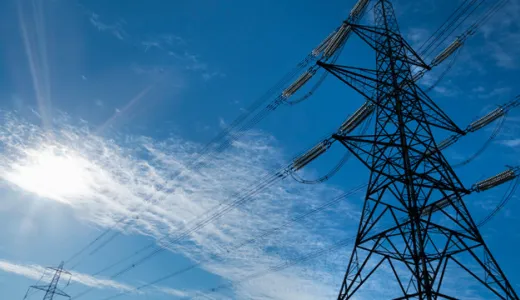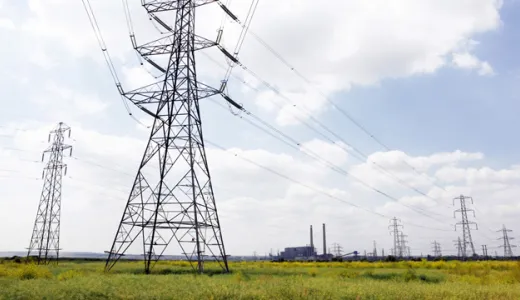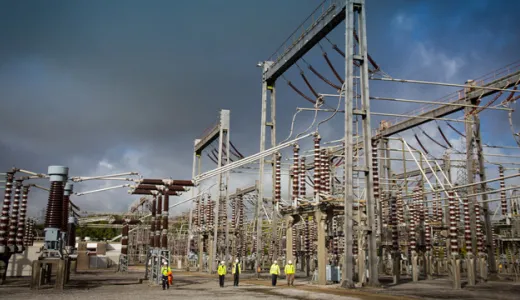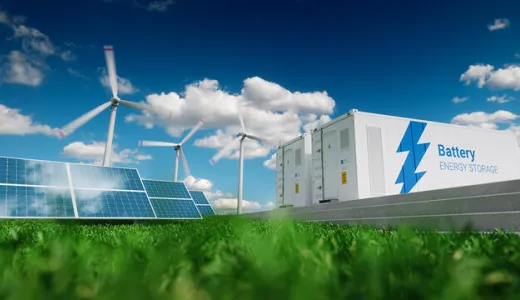What is a T-pylon?
The T-pylon is the first new design for UK electricity pylons in nearly 100 years.
This new pylon design is a potential technology choice for future electricity transmission network projects, alongside offshore routes, underground cabling and the continued use of traditional lattice pylons.
The first use of T-pylons is as part of National Grid’s Hinkley Connection Project, which is currently under construction in Somerset.
Who designed the T-pylons?
The new pylon design came from Danish pylon development firm Bystrup. It was chosen from 250 entries in an international competition, organised by National Grid, the UK Government and the Royal Institute of British Architects in 2011.
With a need for new energy infrastructure to enable progress towards net zero, the competition sought a new design that could reduce impact on the local environment and surroundings.

What’s the difference between T-pylons and regular pylons?
At around 114ft (35m) tall, the T-pylons being built on the Hinkley Connection Project are around a third shorter than traditional steel lattice pylons but can still transmit 400,000 volts.
They’re also sleeker, with a single pole and T-shaped cross arms that hold the overhead power lines suspended from two diamond-shaped ‘earrings’.
Although more steel is used to make T-pylons compared to the equivalent lattice pylon, the base of a lattice pylon takes up around three times the area – and uses around 1.5 times the amount of concrete – so the T-pylons leave more land available to landowners that is typically used for farming.
The operational life of a T-pylon is about the same as a traditional lattice pylon at around 70-80 years. The conductors, insulators and fittings normally last for about 40 years, and are replaced mid life-cycle.
When were the first T-pylons energised?
In 2023, 36 of the world's first T-pylons were energised between Bridgwater and Loxton in Somerset – a major milestone in National Grid's Hinkley Connection project. The 35 mile (57km) route will connect 6 million homes and businesses to home-grown, low-carbon energy from EDF’s Hinkley Point C power station.
A further 80 T-pylons will be completed and energised by 2024.
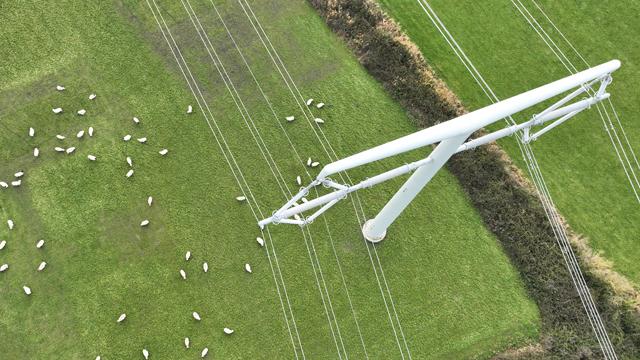
Where are T-pylons made?
Allied Insulators, based in Stoke-on-Trent, has designed, manufactured and supplied the diamond-shaped insulators used in the T-pylons. Concrete for the pylon foundations is from a Bridgwater supplier and smaller components, including bolts and fixings, are also manufactured in the UK.
The body of the T-pylons being used to connect low-carbon energy from Hinkley Point C are made in China, while the diamond-shaped structures are made in the UK. Following a thorough tendering process, a supplier was chosen that could supply the body of the T-pylon at the best price. Were T-pylons to be used in the future in the UK, the ambition would be for them to be manufactured in Great Britain.
Why are they painted white and not blue or green?
The colour is stipulated in our development consent order and is in line with (as well as being complementary to) the colour of wind turbines.
How do we decide when to use T-pylons?
Each new electricity transmission network project is assessed on a case-by-case basis, with the technology we use based on planning policy and regulations set by Ofgem as well as engineering, environmental and cost considerations.
Last updated: 28 Apr 2023
The information in this article is intended as a factual explainer and does not necessarily reflect National Grid's strategic direction or current business activities.
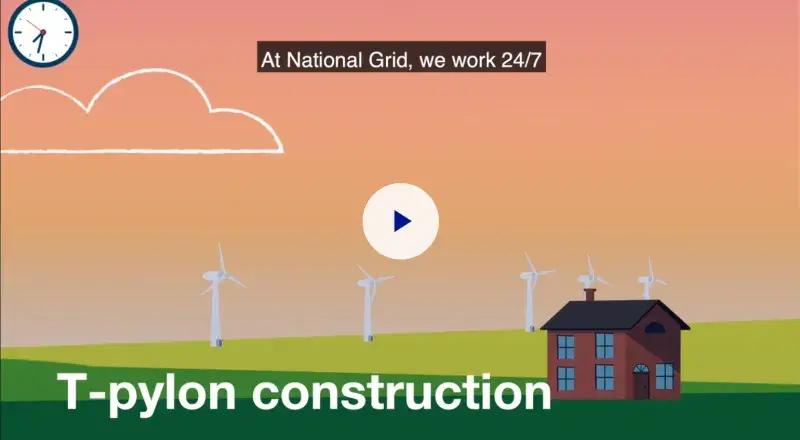
How are T-pylons built?
Want to know more about how T-pylons are built? From laying the foundations to ‘stringing’ the cables, this video shows the process of constructing these exciting new electricity pylons.
Sources:
- Facts about electricity pylons | National Grid Group
- Hinkley Connection Project | National Grid ET
- What’s a T-pylon and how do we build them? | National Grid ET
- T-pylon time capsules will reveal what our lives were like | National Grid Group
- National Grid energise world’s first T-pylons | National Grid Group
- T-pylon – an innovative new design for Somerset
